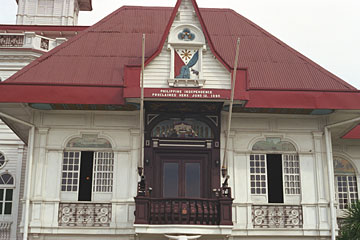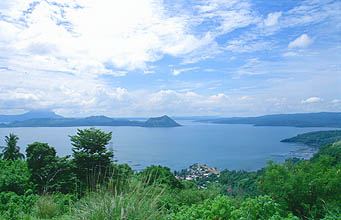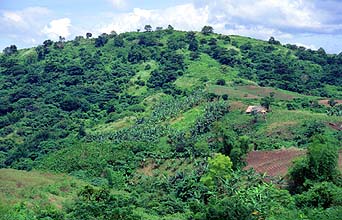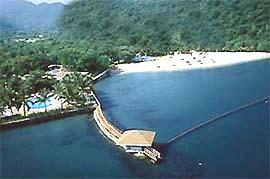| THE PROVINCE OF CAVITE General Information FAST FACTS: Capital : Trece Martires City Area : 1,287.6 sq. km No. of Towns : 20 Cities: Trece Martires, Cavite and Tagaytay Language: Chavacano, Tagalog Cavite Province is rich in culture and history. Kawit, Cavite is the site where the first successful Philippine revolution was waged. It is also the place where the flag of the Philippine Republic was first hoisted to proclaimed the country's independence. Cavite was a center of military operations during the Philippine Revolution of 1896. The Spaniards executed 13 Filipino revolutionaries in Cavite City that year: the provincial capital is now named after them "Trece Martires City". On June 12, 1898, General Emilio Aguinaldo proclaimed Philippine independence form his residence in Kawit. Bacoor became the capital until the seat of government was transferred to Malolos, Bulacan. A civil government was established by the Americans in Cavite in 1901, with Cavite City as provencial capital. CAVITE, chartered city and seaport of the northern Philippines, in Cavite Province. Cavite is located on Luzon Island, on Manila Bay, near Manila. The city has a fine harbor and is encircled by walls. The principal articles of trade include corn, rice, sugar, coffee, cacao, copra, bananas, and Manila hemp. On a narrow neck of land extending east into the bay are the remains of fortifications dating from Spanish colonial times and a former United States naval facility. Under Spanish rule Cavite was a naval base and following its capture by the American admiral George Dewey in 1898, during the Spanish-American War, it became the principal base of the U.S. Asian Fleet. The Japanese captured Cavite in December 1941, during World War II, and held it until 1945. Population (1990) 92,000 Tagaytay is perched on a ridge, 686 meters above Taal Lake and its active island-volcano. The ridge is believed to be part of the crater of a much larger, long-since-collapse volcano. Today, the ridge forms part of the outer rim of the Taal caldera as it stretches 32 km from Mt. Batulao to Mt. Sungay. The overlook at Taal Vista Lodge offers a spectacular view of the volcano (about 15 km distant) and lake, making Tagaytay one of the most popular excursion trips around Cavite during summer. In clear weather, the South China Sea is visible in the distance, though at other times, fog can come sweeping swiftly across the lake. Folk dancing sometimes takes place at this viewpoint at midday. Hawks glide above, and during March/April, huge black-and-yellow birdwing butterflies frequent the ridge. The elevation results in a pleasantly cool climate, with continual breezes, so that some wealthy Filipinos maintain weekend retreats here. Tagaytay was, in fact, originally established as a potential alternative summer resort to Baguio. Evenings can be chilly. Tagaytay City sprawls over 65 square km; it contains extensive market gardens. Numerous fruit stalls usually line the main road. Tagaytay is a 60-km, 90-min journey from Manila. Cavite is predominantly an agriculture province. Its major crops inlude rice, corn, vegetables, fruits, rootcrps, coffe, coconut and sugarcane. The province is endowed with rich offshore and coastal fishing grounds. Fishing is a major source of livelihood in the coastal towns. Many industrial establishments are now operating in Cavite, and more industrial estates have been or are being developed in various parts of the province. |
Source: Lakbaypilipinas.com






2 comments:
I just learned about your page from a friend and I’m glad I did visit it; I found lots of interesting articles. I enjoyed reading and I’m gonna share it with my other friends too.
www.n8fan.net
Awesome there, Great work, keep it up. I love returning back to this site and reading the quality content you always have on offer.
Viena
www.gofastek.com20
Post a Comment